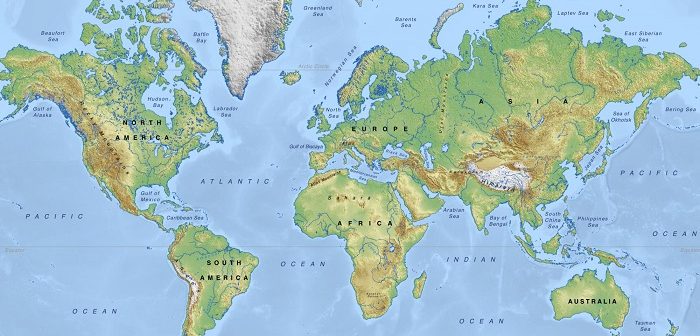Switzerland has maintained its lead for the eighth successive year in the Global Innovation Index (GII) 2018 that lists a total of 126 countries based on their performance on various parameters including innovation inputs such as regulatory environment, education, R&D and infrastructure as well as outputs such as patents filed and knowledge diffusion.
The Netherlands has climbed to the second spot, pushing down Sweden to the third place it occupied in the 2017 edition of the Index. The United Kingdom also moved up by one place to the 4th rank, displacing the United States.
Singapore is in the 5th place followed by the US in the 6th, Finland in the 7th, (climbed one place) Denmark 8th, (slipped from 6th rank), Germany 9th and Ireland in the 10th rank (both retain previous year’s ranking).
Switzerland is rated in Income Group Strength/Weakness as also in Strength/Weakness criteria with a score of 68.40. Netherlands and Sweden, similarly rated, notch up the score at 63.30 and 63.10 respectively. The United Kingdom is rated for strength only at 60.10.
The Global Innovation Index 2018: Energizing the World with Innovation, is dedicated to the theme of energy innovation. It analyses the energy innovation landscape of the next decade and identifies possible breakthroughs in fields such as energy production, storage, distribution, and consumption.
Most top science and technology clusters are in the U.S., China, and Germany; Brazil, India, and Iran also make the top 100 list. The report says there is potential to ramp up innovation in most middle-income economies as well as to progressively increase innovation in low-income economies.
It also looks at how breakthrough innovation occurs at the grassroots level and describes how small-scale renewable systems are on the rise.
Co-published by Cornell University, INSEAD and the World Intellectual Property Organization (WIPO), a specialized agency of the United Nations, the GII draws on the expertise of its Knowledge Partners. The partners are the Confederation of Indian Industry (CII), PwC’s Strategy&, the National Confederation of Industry (CNI) and Serviço Brasileiro de Apoio às Micro e Pequenas Empresas (Sebrae), as well as an Advisory Board of eminent international experts.
It aims to capture the multi-dimensional facets of innovation by providing a rich database of detailed metrics for 126 economies, which represent 90.8% of the world’s population and 96.3% of global GDP. At present, GII is being used as a tool for action by a large number of high, medium and low-income countries to improve innovation performance, often at the Prime Ministerial and Ministerial level. It could also include cross-ministerial task forces comprising a large variety of relevant innovation stakeholders.
By collecting innovation metrics, GII assists countries to assess their innovation performance more accurately. By identifying strengths and challenges, it also helps empower countries to improve their innovation policies by leveraging strengths and overcoming challenges.
Meanwhile, China has maintained its steady progress on the index. From the 2nd slot last year, the country now ranks 17th with a score of 53.10. India, the other major Asian economy on the growth path, climbed to 57 from its 60th rank in the previous edition.
The key findings of GII 2018 include optimistic outlook about global innovation and growth, the need for continued investments in breakthrough energy innovations for global growth and to avert an environmental crisis and China’s rapid rise setting an example for other middle-income economies
Richer economies, with more diverse industry and export portfolios, are likelier to score high in innovation. Focusing on translating innovation investments into results is the key. Strong regional innovation imbalances are hampering economic and human development.
Most top science and technology clusters are in the U.S., China, and Germany; Brazil, India, and Iran also make the top 100 list. The report says there is potential to ramp up innovation in most middle-income economies as well as to progressively increase innovation in low-income economies.
ALSO READ: Do MBA Admission Officers Get Impressed By Job Titles, Years of Work Experience?
It also considers the possibility of innovation expenditures being aligned with economic growth over the next few years. Also, if India and other emerging countries in Asia, along with countries in Latin America, Central Asia and Africa, follow the dynamic innovation trajectory of China in the next several years.
If increased protectionism, especially which impacts technology-intensive sectors, IP and knowledge flows across the board could be contained, the dynamics could create the basis for productive knowledge spill-overs and opportunities for collaboration and the generation of new knowledge and innovation.
In the energy sector, it found that innovation is not the privilege of high-income economies alone. India and China are delving deeper into the downstream applications of photovoltaic technologies. Energy innovation is happening at the grassroots level too.
For example, small-scale systems to provide electricity for people living far from the grid are on the rise. Yet to realize their full potential, new energy innovation systems, coupled with intense innovation efforts, are needed at all stages of the energy system value chain. Higher levels of technological and non-technological innovation are required on diverse fronts. (Image source:mapswire.com)
Global innovation index rankings:
| Rank | Economy | Income Group(Strength/Weakness) | Strength / Weakness | Score |
| 1 | Switzerland | Strength | Strength | 68.4 |
| 2 | Netherlands | Strength | Strength | 63.3 |
| 3 | Sweden | Strength | Strength | 63.1 |
| 4 | United Kingdom | Strength | 60.1 | |
| 5 | Singapore | 59.8 | ||
| 6 | United States of America | 59.8 | ||
| 7 | Finland | 59.6 | ||
| 8 | Denmark | 58.4 | ||
| 9 | Germany | 58 | ||
| 10 | Ireland | 57.2 | ||
| 11 | Israel | 56.8 | ||
| 12 | Korea, Republic of | 56.6 | ||
| 13 | Japan | 55 | ||
| 14 | Hong Kong (China) | 54.6 | ||
| 15 | Luxembourg | 54.5 | ||
| 16 | France | 54.4 | ||
| 17 | China | 53.1 | ||
| 18 | Canada | 53 | ||
| 19 | Norway | 52.6 | ||
| 20 | Australia | Weakness | 52 | |
| 21 | Austria | Weakness | 51.3 | |
| 22 | New Zealand | Weakness | 51.3 | |
| 23 | Iceland | Weakness | 51.2 | |
| 24 | Estonia | Weakness | 50.5 | |
| 25 | Belgium | Weakness | 50.5 | |
| 26 | Malta | 50.3 | ||
| 27 | Czech Republic | 48.7 | ||
| 28 | Spain | 48.7 | ||
| 29 | Cyprus | 47.8 | ||
| 30 | Slovenia | 46.9 | ||
| 31 | Italy | 46.3 | ||
| 32 | Portugal | 45.7 | ||
| 33 | Hungary | 44.9 | ||
| 34 | Latvia | 43.2 | ||
| 35 | Malaysia | Strength | 43 | |
| 36 | Slovakia | 42.9 | ||
| 37 | Bulgaria | Strength | 42.6 | |
| 38 | United Arab Emirates | 42.6 | ||
| 39 | Poland | 41.7 | ||
| 40 | Lithuania | 41.2 | ||
| 41 | Croatia | Strength | 40.7 | |
| 42 | Greece | 38.9 | ||
| 43 | Ukraine | Strength | 38.5 | |
| 44 | Thailand | 38 | ||
| 45 | Viet Nam | Strength | 37.9 | |
| 46 | Russian Federation | 37.9 | ||
| 47 | Chile | Weakness | 37.8 | |
| 48 | Moldova, Republic of | Strength | 37.6 | |
| 49 | Romania | 37.6 | ||
| 50 | Turkey | 37.4 | ||
| 51 | Qatar | Weakness | 36.6 | |
| 52 | Montenegro | 36.5 | ||
| 53 | Mongolia | Strength | 35.9 | |
| 54 | Costa Rica | 35.7 | ||
| 55 | Serbia | 35.5 | ||
| 56 | Mexico | 35.3 | ||
| 57 | India | Strength | 35.2 | |
| 58 | South Africa | 35.1 | ||
| 59 | Georgia | Strength | 35 | |
| 60 | Kuwait | Weakness | 34.4 | |
| 61 | Saudi Arabia | Weakness | 34.3 | |
| 62 | Uruguay | Weakness | 34.2 | |
| 63 | Colombia | 33.8 | ||
| 64 | Brazil | 33.4 | ||
| 65 | Iran, Islamic Republic of | 33.4 | ||
| 66 | Tunisia | 32.9 | ||
| 67 | Brunei Darussalam | Weakness | 32.8 | |
| 68 | Armenia | 32.8 | ||
| 69 | Oman | Weakness | 32.8 | |
| 70 | Panama | 32.4 | ||
| 71 | Peru | 31.8 | ||
| 72 | Bahrain | Weakness | 31.7 | |
| 73 | Philippines | 31.6 | ||
| 74 | Kazakhstan | 31.4 | ||
| 75 | Mauritius | 31.3 | ||
| 76 | Morocco | 31.1 | ||
| 77 | Bosnia and Herzegovina | 31.1 | ||
| 78 | Kenya | 31.1 | ||
| 79 | Jordan | 30.8 | ||
| 80 | Argentina | 30.7 | ||
| 81 | Jamaica | 30.4 | ||
| 82 | Azerbaijan | 30.2 | ||
| 83 | Albania | 30 | ||
| 84 | TFYR Macedonia | 29.9 | ||
| 85 | Indonesia | 29.8 | ||
| 86 | Belarus | 29.4 | ||
| 87 | Dominican Republic | 29.3 | ||
| 88 | Sri Lanka | 28.7 | ||
| 89 | Paraguay | 28.7 | ||
| 90 | Lebanon | 28.2 | ||
| 91 | Botswana | 28.2 | ||
| 92 | Tanzania, United Republic of | Strength | 28.1 | |
| 93 | Namibia | 28 | ||
| 94 | Kyrgyzstan | 27.6 | ||
| 95 | Egypt | 27.2 | ||
| 96 | Trinidad and Tobago | Weakness | 27 | |
| 97 | Ecuador | Weakness | 26.8 | |
| 98 | Cambodia | 26.7 | ||
| 99 | Rwanda | Strength | 26.5 | |
| 100 | Senegal | Strength | 26.5 | |
| 101 | Tajikistan | 26.5 | ||
| 102 | Guatemala | 25.5 | ||
| 103 | Uganda | 25.3 | ||
| 104 | El Salvador | 25.1 | ||
| 105 | Honduras | 24.9 | ||
| 106 | Madagascar | 24.8 | ||
| 107 | Ghana | 24.5 | ||
| 108 | Nepal | 24.2 | ||
| 109 | Pakistan | 24.1 | ||
| 110 | Algeria | Weakness | 23.9 | |
| 111 | Cameroon | 23.8 | ||
| 112 | Mali | 23.3 | ||
| 113 | Zimbabwe | 23.1 | ||
| 114 | Malawi | 23.1 | ||
| 115 | Mozambique | 23.1 | ||
| 116 | Bangladesh | 23.1 | ||
| 117 | Bolivia, Plurinational State of | Weakness | 22.9 | |
| 118 | Nigeria | Weakness | 22.4 | |
| 119 | Guinea | 20.7 | ||
| 120 | Zambia | Weakness | Weakness | 20.7 |
| 121 | Benin | 20.6 | ||
| 122 | Niger | 20.6 | ||
| 123 | Côte d’Ivoire | Weakness | Weakness | 20 |
| 124 | Burkina Faso | Weakness | Weakness | 18.9 |
| 125 | Togo | Weakness | Weakness | 18.9 |
| 126 | Yemen | Weakness | Weakness | 15 |




